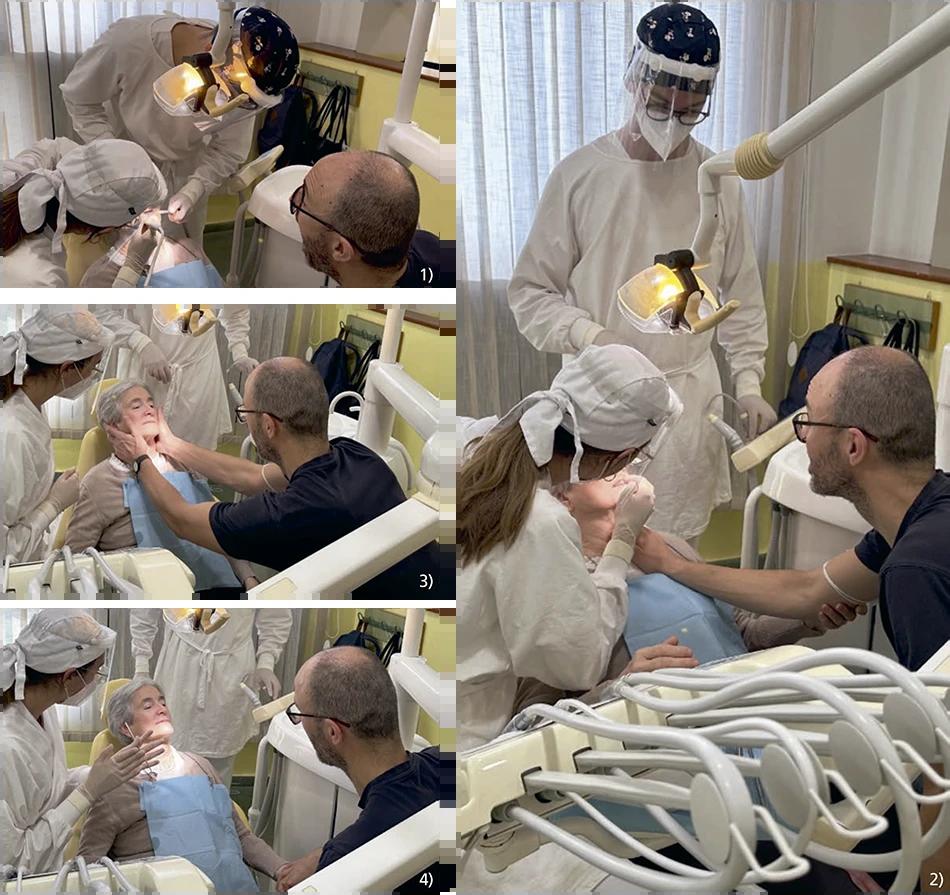Samsung sample in his TV tv to show a cammium-free number that you are available, good colors to make the best colors.
Samsung Korea demonstrates the complete internal structure of a QLED TV, from the main board to the optical layer.The images in this article detail the order of electronic, optical and backlight modules of SmartTVs with QLED panels.
The Qled technology used in this modem combines a traditional LCD base with a layer of elamSignal in a single copy, responsible for transforming white light and high brightness.
This principle maintains the efficiency of the transmission system and the inorganic stability of the materials, while attempting to compensate for the typical contrast and viewing angle limitations of LCD displays.
To understand how qnel of Q works, there is no need to think about a formula or wax pro.Imagine what happens inside a TV when you turn on the light that creates the image: behind the screen is a series of things that change the blue colors we see.
- The TV starts up with a very bright blue light produced by a small LED.
- This light passes through a layer of tiny crystals called quantum dots.
- Each crystal will replace some of the blue fur with red or green colors.
- By mixing blue, red and green, the image we see on the screen is created.
- This method allows for a wider color range and prevents the surface from burning over time.
The physical structure and layout of the Samsung QLED panel
Kals TV's design is based on a lightweight architecture that simulates the direction, intensity and color of light emitted by an LED, passing through several layers of LEDs.
Design of original LCD panels, but includes changes to solvent separation, chassis speed and assembly stability.
Determine the undisturbed visual presented by sudung referee: How metallic materials and semi-duriary polymers create structures that support optical layers.
Made of anodized aluminum, it distributes the heat generated by the power module and processor.Its hardness prevents deformation of the chassis and maintains the uniformity of the optical layer, which is a necessary condition for uniform brightness.
The centralized design combines the processors, power supply and drivers of the mini-LED matrix in one area.
This circuit integrates mini LED backlight drivers, power, and signal processing.Its central location reduces electrical losses and improves passive dissipation during peak brightness that can exceed 6,000 nits.
This motherboard-integrated RF module processes analog and digital signals and provides a stable response to interference.Its direct connection to the processor reduces video conversion delay and improves synchronization with automatic calibration routines.
Q4 AI processor
The Q4 AI processor analyzes each frame to adjust contrast, color and brightness while coordinating regional activation of the mini-LED system.The passive aluminum heatsink maintains a consistent temperature without the need for fans, and ensures color accuracy over long sessions.
The composition channels the blue light emitted by the LEDs into the quantum film, where the inorganic dots convert some of that energy into red and green wavelengths.Sealed barriers account for about 40% of panel costs, protect the nanocrystals from moisture and ensure long-term color stability.
Optical system and quantum film (quantum dot)
The TV receives the blue light received by the TV or TV leader and changes the correct version and chromaticity of the classroom.
Disasy lets us follow the steps that lead from a smile to a liquid Christmas leaf, including the Quantum Dots movie that kicked off the QBLED series.
Each part fulfills a special connection: Guide the light, distribution, pouring the blue of the light in the red and green colors and controlling its passage at the pixel level.
On the screen of the LCD there is an arrangement of a list of thin film transistors (TFT) and the liquid crystal layer is placed between the scrolling filters.When a voltage is applied to each other, the molecules change their direction and change the polarization of the light passing through the RGB file, which creates the final color.
The circuit board at the bottom coordinates the voltage and synchronizes the lighting of the pixels by adjusting the brightness and contrast of the image surface.
PMMA: Optical substrate that directs light from blue LEDs through total internal reflection.
Made of PMMA, it acts as a light guide that channels electricity from the internal control system.Its thickness and optical polishing maintain a constant use of light throughout the TV.
PMMA (Polymethyl methacrylate) is a tripplastic polymer used in special optics.
- It has a transmission ratio greater than 92%, which allows almost all the light emitted from the backlight to pass through the sheet.
- Due to the low heat absorption rate, the optical index is not deformed or changed by the heat generated from the diode.
- Provides sufficient dimensional stability and stiffness to maintain alignment of multi-layer optical systems.
- Behavior towards blue light is more neutral than polycarbonate. To avoid spectrum loss
The low thermal absorption of the material prevents geometric distortion and ensures stable transmission even with prolonged brightness peaks.
Quantum Dot Blade
This multilayer film is a bilayer crystalline encapsulated semiconductor nanocrystal between the layers that resists oxidation and moisture.
The materials used do not contain cadmium, which ensures chemical stability and compatibility with the environment without affecting spectral purity.The production of this layer represents about 40% of the total cost of the panel, due to the necessary precision in its sealing and visual uniformity.
Quantum digitals emit different wavelengths depending on their size, replacing traditional sound with a directional image conversion.This process increases chromatic clarity and delivers 100% of the DCI-P3 space with average brightness above 6,000 nits.
The plate is made of optical polycarbonate, its microstructured surface scatters light rays at controlled angles, balancing the intensity of the backlight.
This element eliminates high-light points and prevents internal shadows, preventing stable and homogeneous creations for spectral conversion.The thermally stable composition makes the optical performance even brighter peaks possible.
This list is made from i-i-iikan Doods, which promotes the improvement of wasted space.His monologue is combined with the dot film being released, turning the blue part into green and red.
This method eliminates the need for white LEDs and increases energy efficiency by up to 20% compared to a conventional LCD system.It also reduces chromatic aberration and increases global luminance, maintaining a more stable color spectrum at high brightness levels.
The expectation of gallium nitride, a widely used semiconductor, is widely used due to its high code efficiency and thermal stability.
- InGaN LEDs are the primary emitters of Samsung QLED televisions
- Its emission penetrates at a height close to 450nm, which is good for bright sweet spots (red and green).
- Unlike traditional white letters that rely on phosphors, certain materials produce pure monochromatic light, improving color accuracy and energy efficiency.
- In addition, its epitaxial layer grown on a sapphire or SiC substrate improves thermal conductivity, allowing high brightness to be maintained without degradation.
Optical Analysis and Comparison Between QLED and LCD
The final part of the analysis shows how the quantum structure of the QLED determines its optical behavior and distinguishes it from traditional LCD displays.Tests reveal differences in color purity, luminance, and spectral width.
ឈីShield Spectrum response maintains brightness and color accuracy with less power loss.
- True QLED combines an active layer of quantum dots, a uniform concentration of nanocrystals and pure blue backlighting.
- With these conditions you can obtain the “Real Quantum Dot Display” certificate from TÜV Rheinland.
- The comparison picture shows a more and clearer peak of production in QLED, compared to the color dispersion of standard LCD screens.
To be recognized as a true quantum dot TV, the system must combine a QD active layer, a uniform concentration of emitting nanocrystals, and pure blue light.
The quantum layer transforms the blue light into precise red and green wavelengths, while the concentration control keeps the thumbs together.
The use of om ipters improves energy efficiency and reduces chromatic aberration, helping to achieve true Quantum DOT display certification authorized by the TüV.
Optical differences between QLED and LCD panels
A direct comparison between a QLED panel and a conventional LCD panel allows us to observe variations in internal structure, light efficiency and chromatic purity.Spectral experiments show how photonic conversion in the quantum dot layer produces more precise and stable wavelengths.
The following graphs compare the QLED color spectrum with traditional LCD:
The spectrum shows narrow, bright maxima for red, green and blue waves.This accuracy is achieved thanks to the direct image conversion made by inorganic dots, which transform the blue light emitted by Ingan lamps into a high-quality color.
Another pass appears to be through the Poptrahesta tube, which just settles, but is useless and the image is clean.
LCD panels without a QD layer have a wider range, especially in the green area, resulting in lower color shift and saturation.To compensate for them, they use additional optical filters that reduce the efficiency of the filter.
Considered at the level of the hall, it is as if the orchestra was playing with several external instruments at the same time: the details overlap and the sound loses its definition.With LCDs, the colors are mixed in the spectrum and the visual results are not correct, with tones that are dirty and lose their power.
TVs featuring Quantum Dot technology panels include the Neo QLED 8K series, the Neo QLED 4K series and the QLED 4K series.








